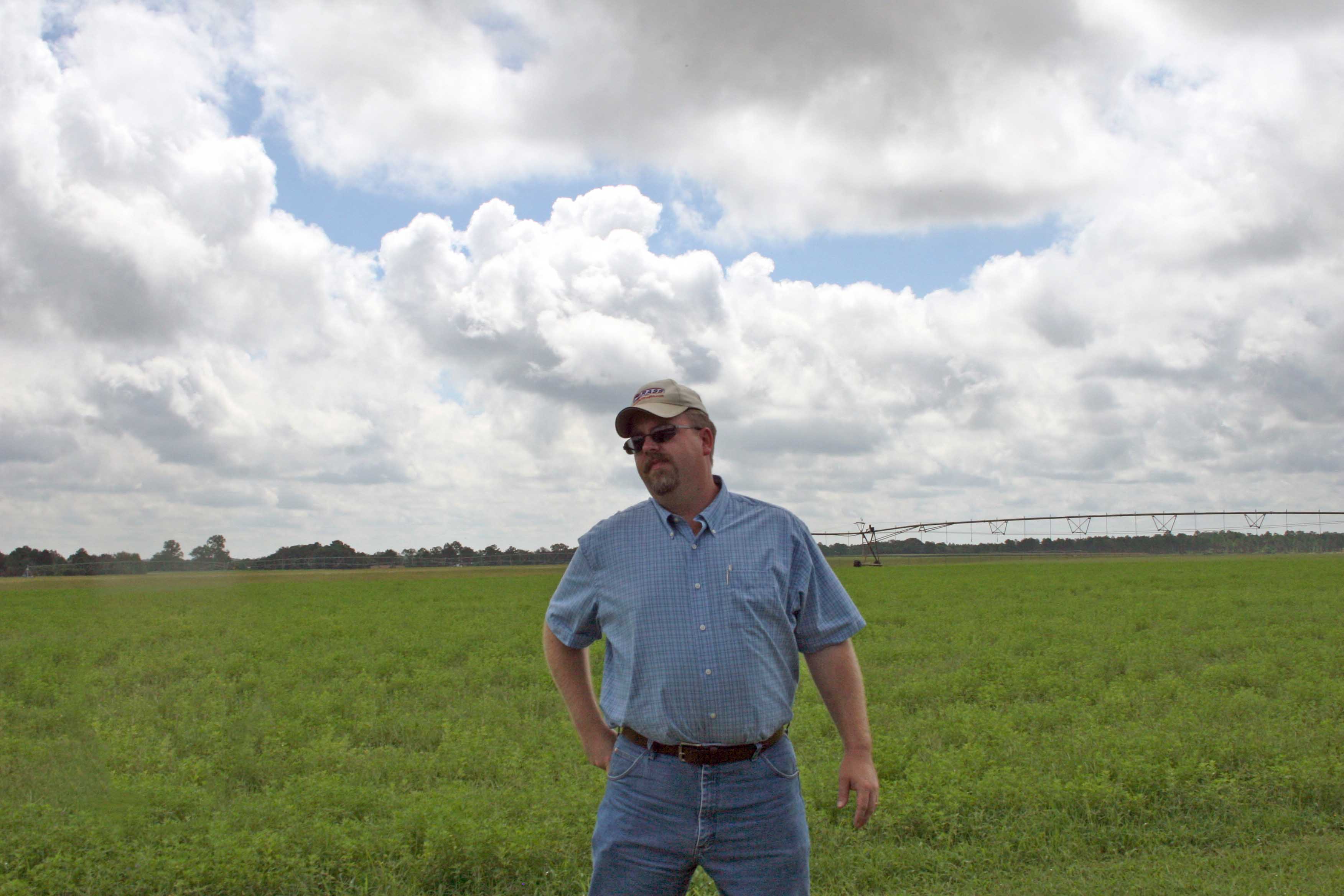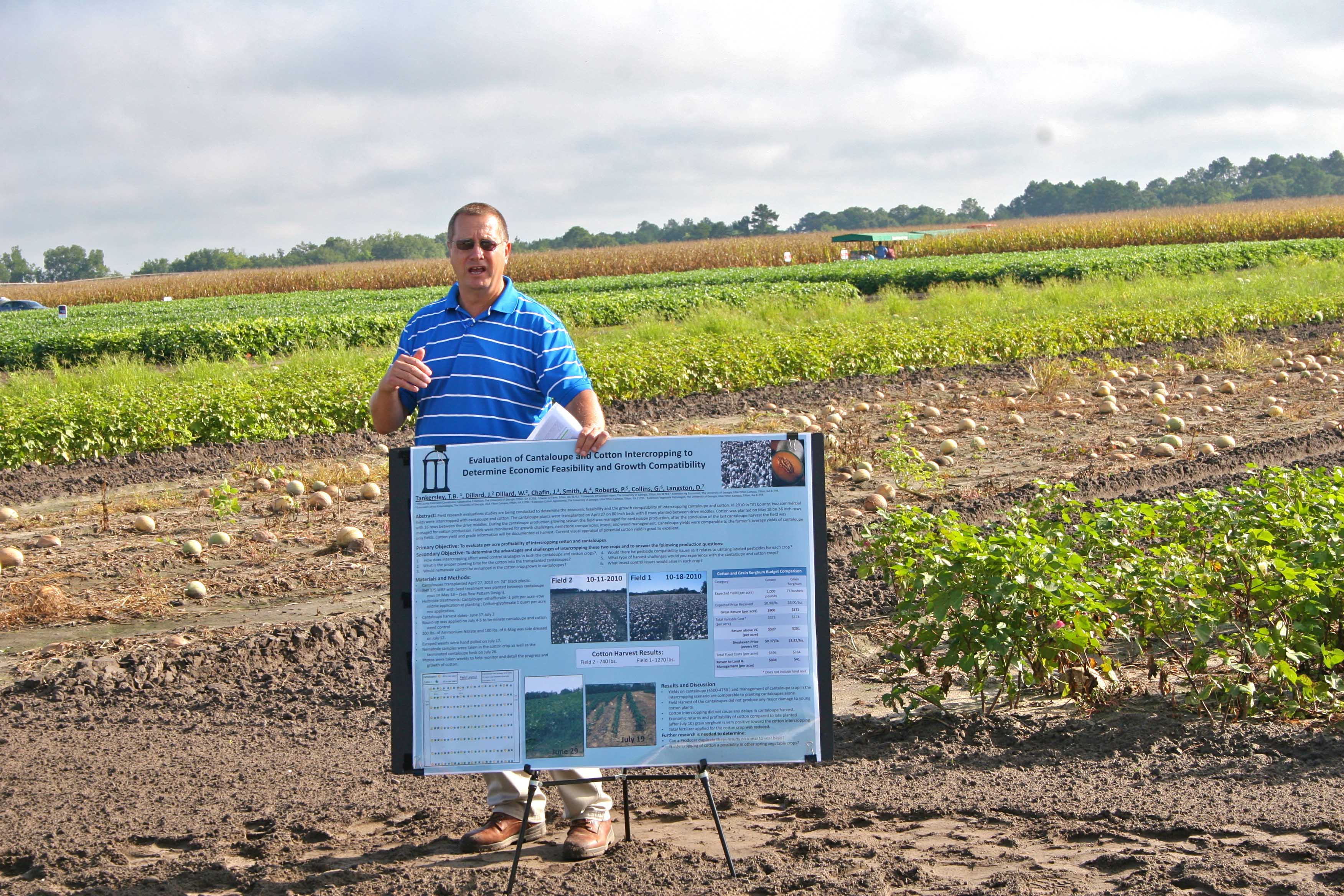On July 12, trams full of farmers, business administrators and reporters toured trial plots at the Sunbelt Ag Expo Field Day, where University of Georgia agricultural experts discussed the latest scientific research for South Georgia.
Researchers from the UGA College of Agricultural and Environmental Sciences shared their results on intercropping, interseeding and other row crop and forage studies at the event in Moultrie, Ga.
Melon and cotton intercropping
Brian Tankersley, Tift County Extension coordinator, discussed two-year trials aiming to improve profits for spring vegetable growers by planting cotton, a later season crop, alongside curcubits.
In the study cantaloupes and watermelons were transplanted into fields between March 18 and April 25. Between April 18 and May 25, herbicide-resistant cotton was then seeded between the melon plants.
After the melons were ready for harvest, herbicide was sprayed to burn down the remaining curcubit vegetation, leaving the cotton to mature for the rest of the growing season.
Working with five growers on 385 acres, researchers found that cantaloupe and watermelon yields were comparable to the yields of those same crops growing alone. Field harvests of melons did not damage young cotton plants, and cotton planting did not create any delays in melon harvest.
In many farm locations, cotton yield averaged more that 1,100 pounds per acre in late plantings put in the ground after July 10. In budget comparisons with post-crop grain sorghum, net return for cotton averaged $260 per acre — about three times that of grain sorghum.
Researchers are still evaluating weed control management and pesticide compatibility issues.
Interseeding alfalfa in bermudagrass
Dennis Hancock, UGA Extension forage specialist, presented on the benefits of interseeding alfalfa in bermudagrass to farmers interested in developing better forage pastures and hay as a cash crop.
He cited five big benefits of interseeding. First, alfalfa fixes nitrogen and virtually eliminates the cost of purchasing nitrogen fertilizer. With high calcium and protein content, alfalfa increases Relative Forage Quality scores by 30 or more points. Interseeding produces excellent hay. Finally, growing alongside bermudagrass helps alfalfa dry faster and be harvested more cleanly.
The ideal pH level for the combination of bermudagrass and alfalfa is 6.5. Hancock stressed the need to follow fertility recommendations for potassium, with concentrations of 250-300 pounds per acre. The micronutrients boron and molybdenum should also be present for nitrogen fixation.
Planting times, bermudagrass length and vigor, and proper insecticide controls are also key to establishing alfalfa successfully.
At the UGA campus in Athens, university researchers have developed an alfalfa variety — Bulldog 805 — that tolerates grazing, has excellent hay yields and is adapted for the Coastal Plain region. It also has high pest and disease resistance. Bulldog 505 is a UGA variety developed for the Piedmont and mountains region.
UGA Cotton Team, UGA Peanut Team
Extension agronomists Glenn Harris and Guy Collins and cotton entomologist Phillip Roberts — members of UGA’s Cotton Team — told growers about their fertilizer research, nitrogen delivery comparisons and insecticide efficacy trials.
Roberts explained the balance of finding an insecticide that targets pest while leaving other insects unharmed.
He cautioned farmers to be careful about an insecticide’s influence on beneficial insects. He warned that some insecticides might wipe out one bug but create the conditions for other pests — like spider mites — to thrive.
“Let’s try to avoid insecticides that may encourage them to become a problem,” Phillips said. “Insecticide selection is more than just selecting something that will kill the target is the message I want to deliver.”
Meanwhile, researchers with the UGA Peanut Team continue to develop and evaluate different peanut cultivars on the Expo site.
Researchers are looking at eight, runner-type peanut varieties in single- and twin-row planting patterns. Five of these varieties are currently available, and three are newly released.
UGA experts will have more demonstrations of their research and share applicable results at the 2012 Sunbelt Ag Expo to be held October 16-18.









